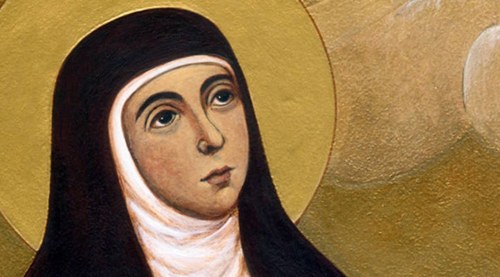
Your complimentary articles
You’ve read one of your four complimentary articles for this month.
You can read four articles free per month. To have complete access to the thousands of philosophy articles on this site, please
Philosophical Haiku
Teresa de Ávila (1515-1582)
by Terence Green
I walk through my soul,
demon-blinded eyes seek truth.
From faith comes reason.

Teresa Sánchez de Cepeda y Ahumada, better known as Teresa de Ávila, the patron saint of headache sufferers, those mocked for their piety, and the makers of lace, was born into great wealth but gave it all up for a life of monastic poverty and mystical writing.
From an early age, Teresa showed a devotion to Christ – at the age of seven, she and her brother tried to run away to be martyred by the Moors; but were prevented from doing so by an unsympathetic uncle. At twenty, Teresa felt the calling again and entered a Carmelite convent. She read works of mysticism, began to experience moments of religious ecstasy, reportedly sometimes levitated, almost died from overdoing the self-mortification, and then turned increasingly to oratio mentalis – prayer based on intense inner contemplation. Towards the end of her life she penned the work from which arises our philosophical interest.
El Castillo Interior (The Inner Castle, 1588) is part of a mediaeval tradition of writings in which the reader is guided through stages of spirituality. Each stage is ideally marked by increased self-enlightenment and a closer union with the Divine. Teresa describes how we enter our castle (our mind/soul) and then make our way through the rooms we find in there. Our goal is communion with God and certain knowledge, but along the way we must overcome barriers in the form of illusions, temptations, and false beliefs, placed before us by such things as demons and devils. Sound familiar? In 1641 René Descartes famously described a similar journey in a more secular mode in his Meditationes de Prima Philosophia (Meditations on First Philosophy). This was also an inward journey of the soul, a quest for certain knowledge. Early on in this quest, he realises that perhaps all he has hitherto believed to be real – the sky, the earth, his own body – might instead be illusions created by a demon laying traps for his judgment. For both Teresa and Descartes, the recognition that we cannot necessarily trust what we previously took to be correct is the first step on the path to Truth.
The Jesuit-educated Descartes would certainly have been familiar with El Castillo Interior. We cannot know exactly how much it influenced his thinking, but it’s a nice thought that the Father of Modern Rationalism was shown the way by a mystic and a saint.
© Terence Green 2020
Terence is a writer, historian and lecturer who lives in Paekakariki, NZ.









